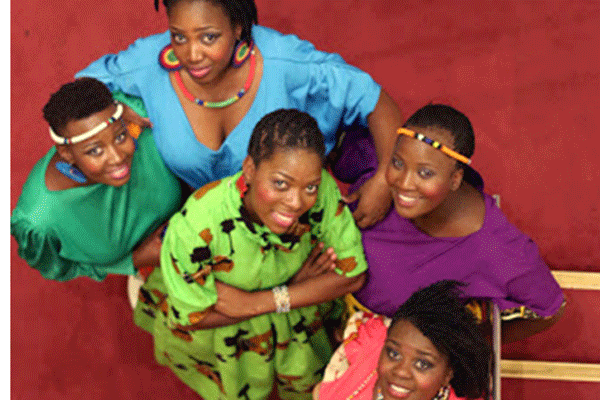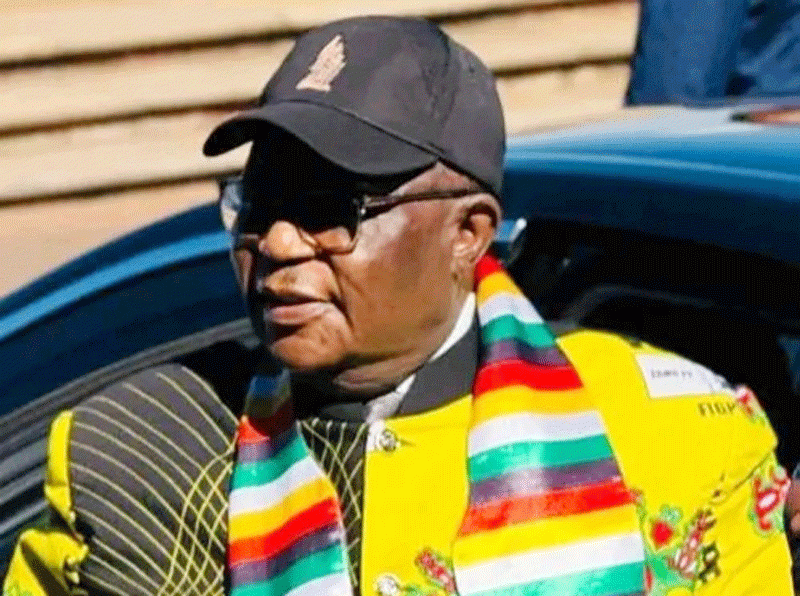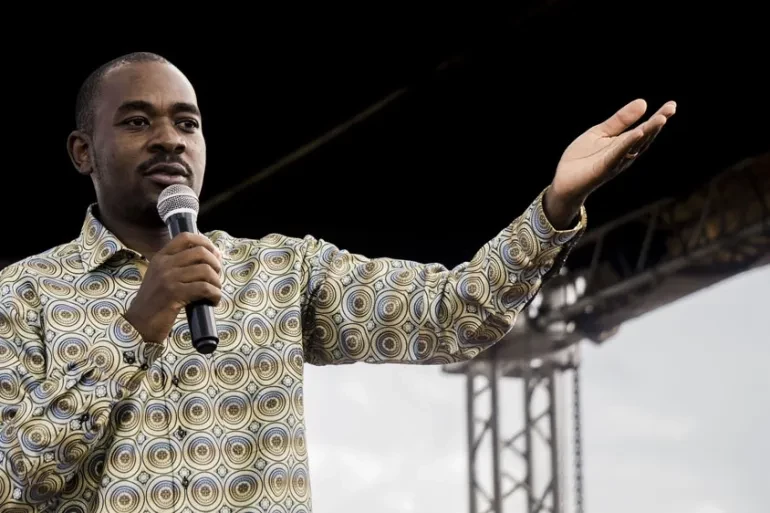
BY SHARON SIBINDI
Adash of eye-catching colour tempered with zesty dances and out-of-this-world vocals, would be a modest description of the globe-trotting, award-winning and all-female acapella group Nobuntu.
Like their ever-evolving multi-coloured costumes, the Bulawayo-based outfit’s music has mellowed over the years attracting a myriad of followers across the globe.
Standard Style caught up with members of the group who spoke about the meaning and inspiration of their costumes on stage as well as the evolution of their costumes — the uniform Java print, popularly known as “African prints”, to the much-sophisticated attires they clad on stage.
As part of the discussion, Keith Moyo, the group’s spokesperson, said Nobuntu had been able to move in accordance with their growth as a brand.
“As an artiste grows into a brand, there comes a time when all detail is paid attention to. The acts are refined, the voices on par and a certain image upheld,” Moyo said.
“There comes a time when the importance of carefully planning your costume is fully realised.
“Performance costumes are not just meant to cover the body, but are used as a means for communicating a message to the audience in a way that leaves them impressed. Nobuntu has figured that out.”
- Chamisa under fire over US$120K donation
- Mavhunga puts DeMbare into Chibuku quarterfinals
- Pension funds bet on Cabora Bassa oilfields
- Councils defy govt fire tender directive
Keep Reading
He said the group does not only focus on sounding great and executing exquisite dance routines, but also looking good for the stage and in the process express their diversified cultural liberation.
“From the time they started off, Nobuntu has evolved in the manner in which they dress on stage,” Moyo said.
Zanele Manhenga, one of the group members, said initially, when they started off, they took the typical route of wearing the African print.
“However, growing into a brand, we wanted to express our different identities as Africans. Most of the time when we travel we meet people who assume Africa is one big country,” Manhenga said.
“They think of Java print, Nigeria, East Africa when the continent is mentioned. We wanted to represent where we come from better and hence we moved from the uniform look to the differing ethnic looks found close to us.”
Heather Dube said their different costumes identify and blend with their story on stage.
“We communicate our different life experiences through how we look. We are proudly African and we feel it through the manner in which we dress. Many people love how we look on stage and that has pushed us to come up with a clothing range,” she said.
Sharing the same sentiments, Joyline Sibanda said it was important to have the audience’s attention, not only by a performance, but by the way one looks on stage.
“Before we open our mouths to sing, our audience should already be captivated by us and how we look. The communicative power that a good attire wields, is beyond words,” she said.
Duduzile Sibanda-Mothobe said the attire determines the stage presence — the bright colours and the bold designs they use for their costumes is intentional.
“We want to express to the world that Africaness is not dull and monotonous, if at all, it stands out as vibrant, enigmatic and dynamic,” she said.
Meanwhile, Thandeka Moyo said the group is responsible for designing their costumes as they understand the importance of communicating through dressing during their performance.
“We want not only for our songs to tell a story, but also for our costumes to relay a message. That is the reason why each artiste is responsible for designing their costumes on the foundation of a culture that one wishes to express,” Thandeka said.
“We then add hints of modern fashion to it and take our designs to a seamstress. Our costumes are derived from the Southern African Bantu cultures and identify with our roots.
“Zimbabwe being a culturally diverse nation, we want that to reflect through our attire on stage.”
However, in most tribes, these traditional outfits are mostly worn during cultural ceremonies and each costume is conceptualised around distinct traditional wear, infused with modern elements.
The group said their outfits vary from Xhosa, Ndebele, Venda, Swati to Herero ethnicity, because most of each group’s cultural elements are found in Zimbabwe.
The Xhosa people are found mainly in South Africa and in Mbembesi, 30km north-east of Bulawayo.
“Xhosa dressing and jewellery are always distinct with two bold colours mainly black and any other colour,” Moyo said.
“Their beadwork is also identified by two main colours and stripes that are usually on the hem of any traditional outfit donned by a Xhosa person.”
Venda people also are mainly found in South Africa and the southern parts of Zimbabwe. Among the Venda people, clothes are a form of non-verbal communication, indicating authority, status, age, rank (supernatural and sacred).
“The Venda culture is vibrant, colourful and elaborate,” said Manhenga.
“It is in your face and unapologetic, and sums up who she is. One of the outfits is inspired by the Kingdom of Eswatini. This nation is found within the borders of South Africa although it is an independent state. In Swati, the traditional wear is specific to the gender group as well.
“The Swati costume is inspired by a Swati married woman with a child as identified by an apron worn over one shoulder and hair made up in a bun.”
According to Nobuntu, southern Ndebele people are famously known for their beautiful house paintings done by the women. The Ndebele people are noted for their use of geometric patterns, bright colour combination blankets, aprons and copper, brass rings worn around the neck, ankles and arms.
“It comes as no surprise that one of our attires is inspired by the southern Ndebele tribe. From our collection of costumes we also have a hybrid costume inspired by a combination of the Herero and northern Ndebele tribe,” Moyo said.
“The hat worn is of Herero ethnicity identified by its cow-horn like shape. The Herero people are mainly found in Namibia and a few parts of Botswana and Angola. Although not popular in Zimbabwe, the hat identifies with the universality of being African in that we are different in ethnic background but one in our Afrocentricity.”
The northern Ndebele part comes in on the coloured hide of the costume. Hides have been used as clothing and protective gear since time immemorial in African tradition.
“The costume consists of a hide design called ingcayo, worn by married women and expecting mothers. In the costume, ingcayo also stands independently as a sign of femininity and respect for the African woman,” said Moyo.
Nobuntu said the top part of the hide is an armour inspired piece and has Western hints to it as well.
“As creative as it is, this costume is symbolic of a warrior gear meant to impel the African girl child as a formidable force worth of respect in a fast-growing globalised world,” Moyo said.










